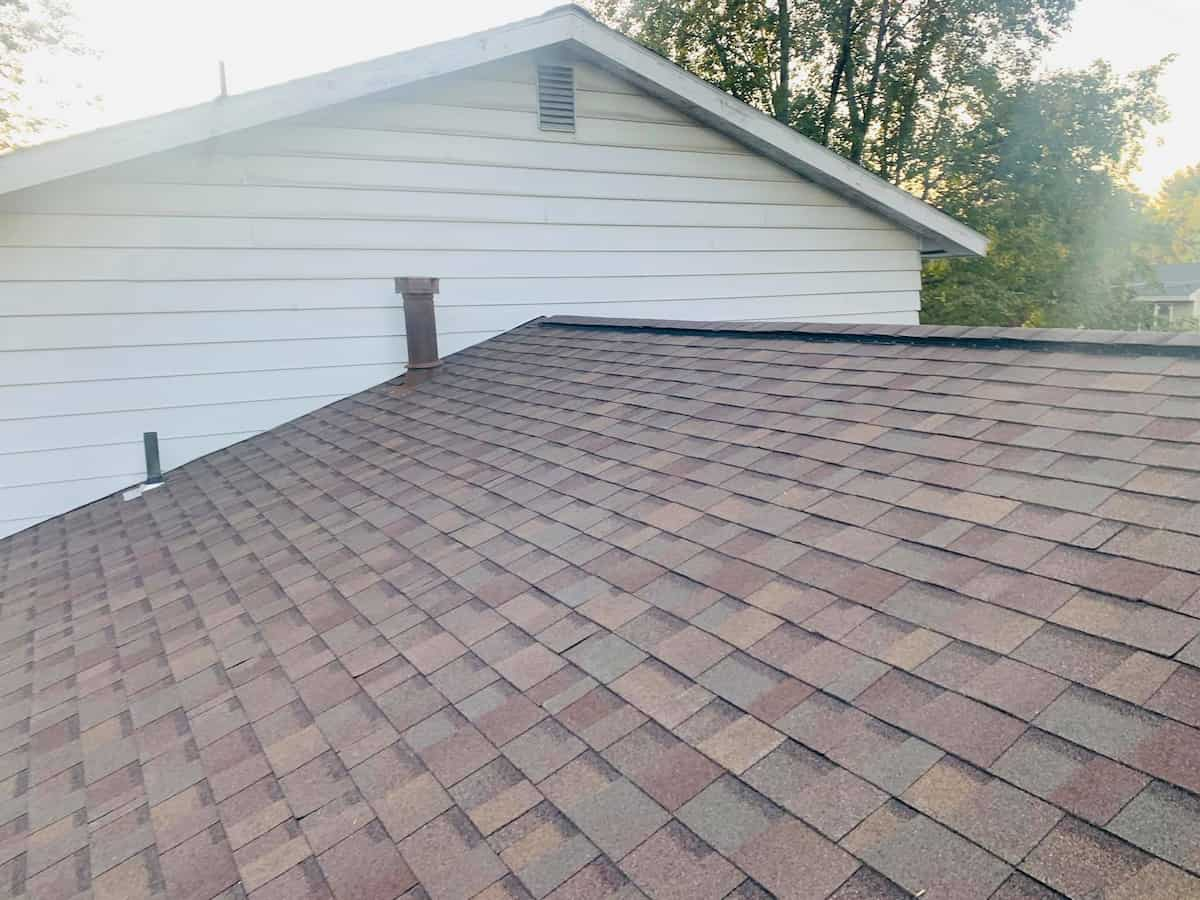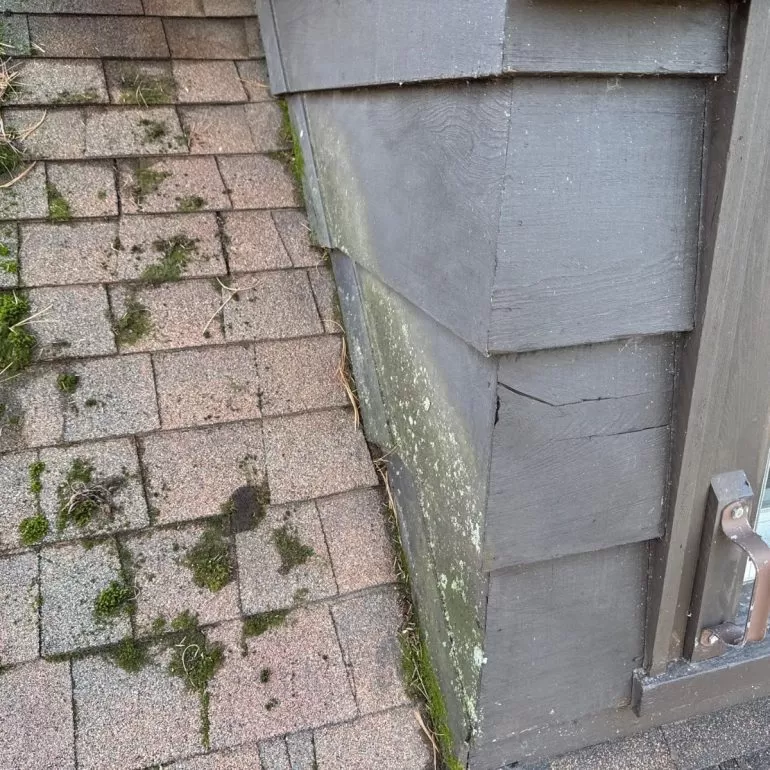When considering roofing options for your home or business, environmental impact is increasingly becoming a top priority for property owners. At Center Construction Roofing, we’re often asked whether composite shingles—one of our most popular offerings—can truly be considered an eco-friendly choice. The answer isn’t simply black and white, but involves understanding the manufacturing process, lifespan, energy efficiency, and end-of-life considerations of these versatile roofing materials.
In this comprehensive guide, we’ll examine the environmental credentials of composite shingles and help you determine if they align with your sustainability goals for both residential and commercial applications.
What Are Composite Shingles?
Composite shingles represent a modern evolution in roofing technology. Unlike traditional materials, these engineered products combine multiple materials to create a more resilient and versatile roofing solution. Typically consisting of:
- A fiberglass mat base for structural integrity
- Asphalt coating for water resistance
- Mineral granules for UV protection and aesthetic appeal
- Various additives for flame resistance and durability enhancement
This engineered approach allows manufacturers to optimize performance characteristics while potentially addressing environmental concerns through careful material selection and production techniques.
Raw Materials and Manufacturing Considerations
The environmental profile of composite shingles begins with their component materials. Traditional asphalt shingles rely heavily on petroleum products, raising sustainability concerns. However, modern composite options increasingly incorporate:
- Recycled content from post-consumer waste
- Sustainably sourced mineral fillers
- Advanced binding agents with reduced environmental impact
- Manufacturing processes designed to minimize energy consumption and emissions
Leading manufacturers have implemented closed-loop water systems, energy-efficient equipment, and waste reduction protocols in their production facilities. These improvements have significantly reduced the carbon footprint associated with composite shingle manufacturing compared to earlier generations of the product.
Environmental Benefits of Modern Composite Shingles
Energy Efficiency Advantages
One of the most significant environmental benefits of quality composite shingles is their potential for energy conservation. Special reflective granules incorporated into premium composite shingles can substantially reduce solar heat absorption. This “cool roof” technology deflects sunlight rather than absorbing it, keeping attic spaces cooler and reducing air conditioning demands during summer months.
Extended Lifespan and Reduced Replacement Frequency
Environmental impact assessments must consider a product’s complete lifecycle. Modern composite shingles typically offer warranties ranging from 25 to 50 years, significantly outlasting many alternative roofing materials. Center Construction Roofing provides Composite Shingles Services with options featuring enhanced wind resistance, impact protection, and algae defense – all contributing to extended service life. This longevity means fewer replacements over a building’s lifetime, reducing the cumulative environmental impact of manufacturing, transportation, and installation processes.
Recyclability and End-of-Life Considerations
Historically, roofing waste has contributed significantly to construction debris in landfills. However, the recycling landscape for composite shingles has evolved considerably. Innovations include:
- Repurposing programs that convert old shingles into asphalt for road construction
- Specialized processing facilities that separate and reclaim component materials
- Manufacturer take-back programs for proper disposal and recycling
While not universally available, these recycling options represent important progress toward closing the material loop for composite roofing products.
Environmental Challenges of Composite Shingles
Petroleum Dependency Concerns
Despite improvements, many composite shingles still rely on petroleum-derived asphalt as a primary component. This dependency connects these products to fossil fuel extraction and refining processes with associated environmental impacts. However, manufacturers continue exploring alternative binding agents and increasing recycled content to reduce virgin petroleum requirements.
Heat Island Effect Considerations
Standard dark-colored composite shingles can contribute to urban heat island effects by absorbing and radiating solar energy. This phenomenon increases cooling demands and associated energy consumption across communities. Lighter colored and specially formulated reflective composite shingles address this concern by significantly increasing solar reflectance values.
Chemical Composition and Environmental Hazards
Some composite shingles contain chemical compounds that raise environmental concerns, particularly:
- Certain flame retardants with bioaccumulation potential
- Adhesives containing volatile organic compounds (VOCs)
- Preservatives designed to prevent algae and moss growth
Responsible manufacturers have been reformulating their products to eliminate or reduce potentially harmful substances while maintaining performance standards. Certification programs now guide consumers toward environmentally preferable options.
Sustainable Alternatives and Innovations
Eco-Friendly Composite Shingle Options
The roofing industry has responded to environmental concerns with innovative composite shingle formulations that emphasize sustainability. These include:
- High-recycled content options utilizing post-consumer waste
- Specially engineered cool roof composites with enhanced reflectivity
- Organic-based alternatives with reduced petroleum dependency
When properly specified and installed by qualified professionals, these advanced products can significantly improve a roof’s environmental performance while maintaining durability and aesthetic appeal.
Beyond Traditional Composites: Emerging Technologies
The quest for truly sustainable roofing extends beyond incremental improvements to composite shingles. Researchers and manufacturers are developing:
- Bio-based binding agents derived from renewable resources
- Fully recyclable single-polymer composite designs
- Integrated solar collection technologies within roofing materials
These innovations promise to transform residential roofing from a passive building component into an active environmental solution.
Making an Environmentally Responsible Roofing Choice
Evaluating Your Specific Situation
The environmental impact of any roofing solution depends heavily on local climate conditions, building design, and regional availability of materials and recycling infrastructure. Are Composite Shingles an Eco-Friendly Roofing Option? The answer requires considering:
- Local climate and typical weather patterns
- Building orientation and roof pitch
- Expected service life and maintenance requirements
- Available end-of-life recycling options
- Energy efficiency goals and overall building performance
Professional Guidance for Sustainable Roofing
Consulting with knowledgeable roofing professionals can help navigate the increasingly complex landscape of sustainable roofing options. Expert contractors understand how to optimize installation methods to maximize environmental benefits while ensuring proper performance and longevity.
Certification Programs as Selection Tools
Environmental certification programs provide valuable guidance when selecting Are Composite Shingles an Eco-Friendly Roofing Option. Look for products meeting:
- ENERGY STAR® requirements for solar reflectance
- Cool Roof Rating Council (CRRC) listings
- UL Environment validations for recycled content
- Green Seal certifications for reduced environmental impact
These third-party verifications help ensure environmental claims are substantiated rather than examples of “greenwashing.”
Conclusion
While no roofing material offers a perfect environmental profile, modern composite shingles can represent a responsible choice when selected with sustainability criteria in mind. By considering factors like recycled content, reflectivity, lifespan, and recyclability, homeowners can minimize the ecological footprint of their roofing decisions. Working with qualified professionals ensures proper installation and maximizes the performance of these increasingly eco-friendly roofing options.






